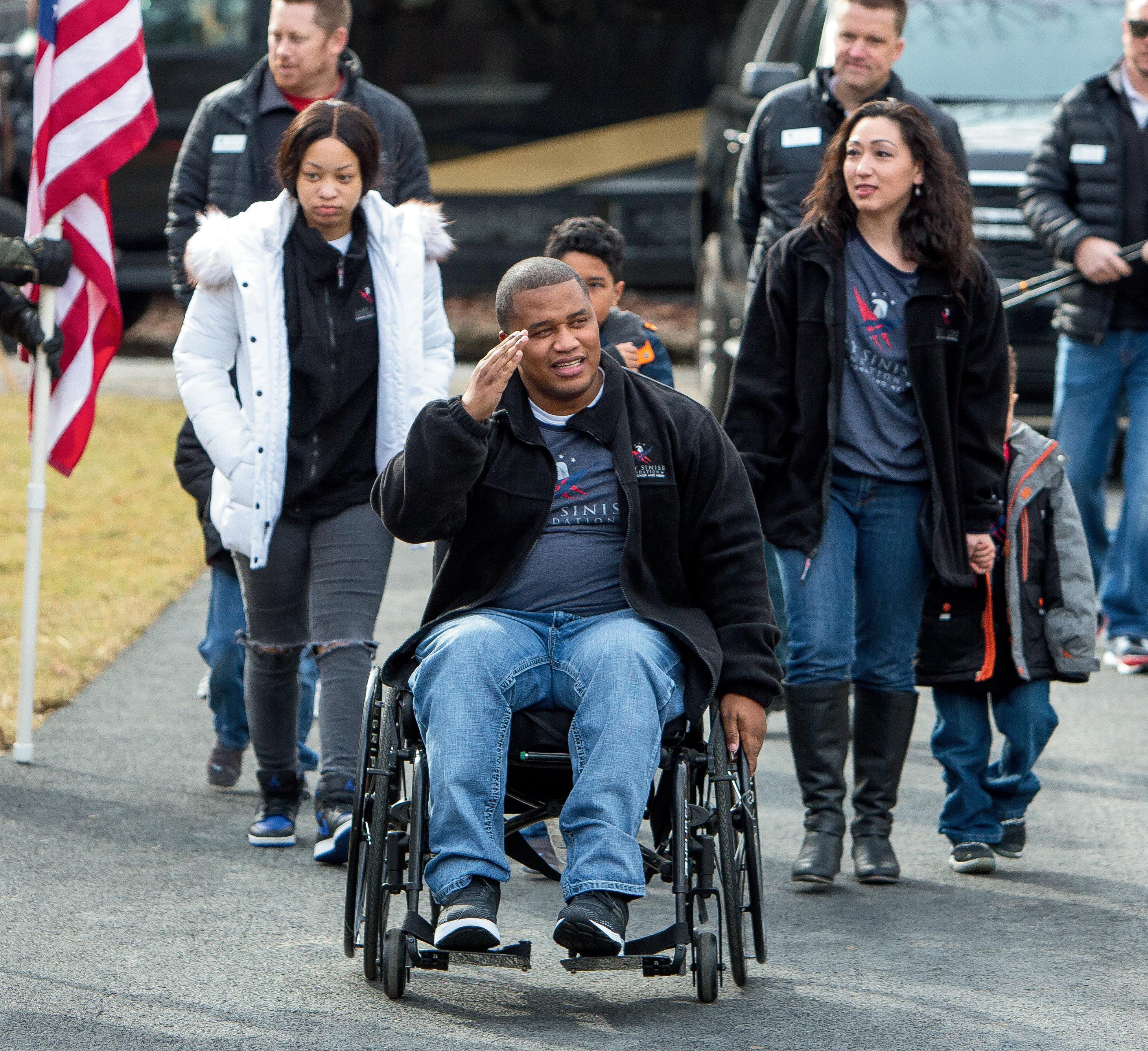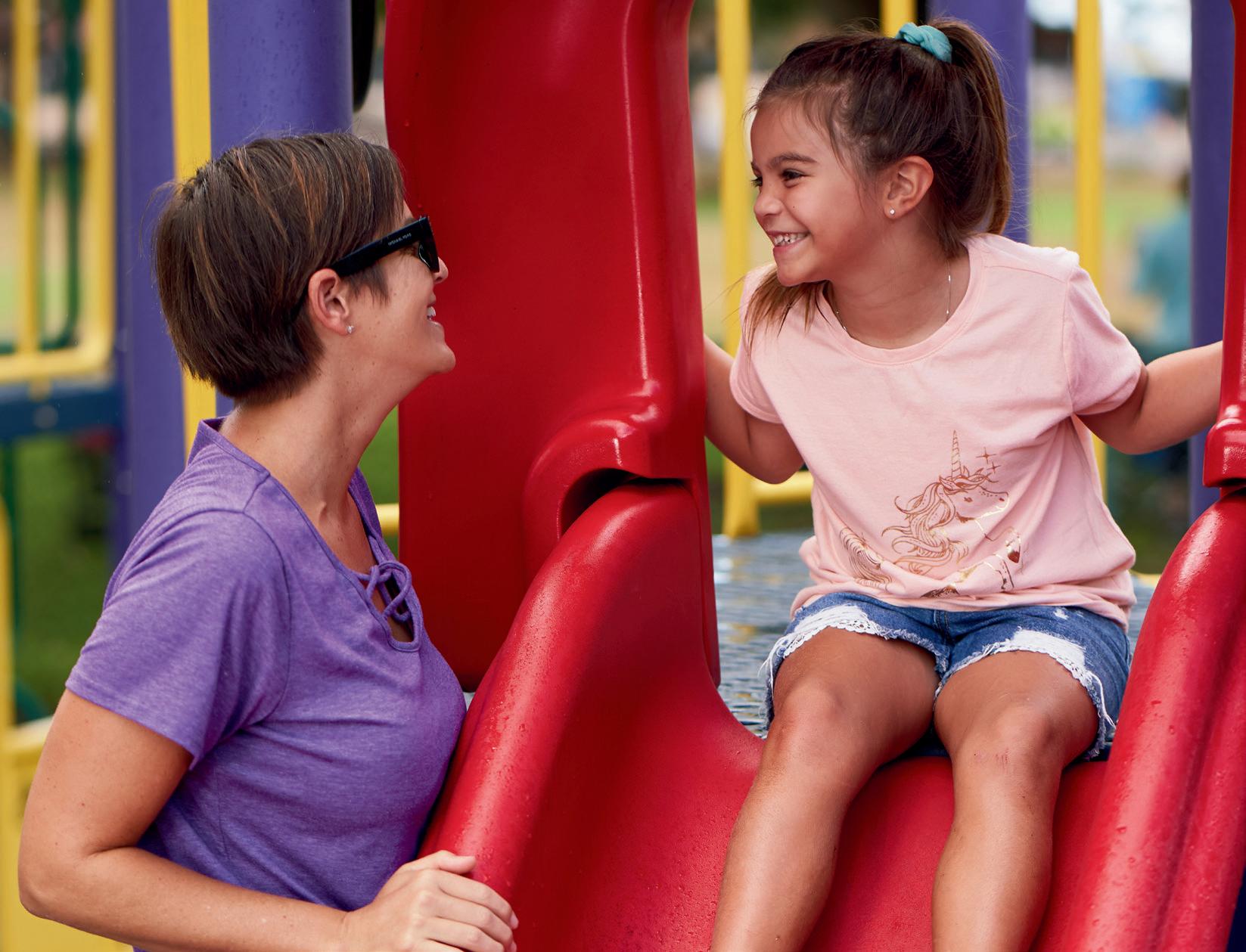
5 minute read
STRENGTHENING FAMILY TIES: ARMY VETERAN REGAINS INDEPENDENCE IN SPECIALLY ADAPTED SMART HOME
BY BRANDON BLACK, SENIOR COMMUNICATIONS WRITER, GARY SINISE FOUNDATION
AT the worst of times, Jeremy Haynes felt like a burden on his wife. Chores around the house that were once routine and effortless suddenly required help because of his limited mobility. He felt demoralized for not being able to assist her and their kids.
Years after a career-ending injury in Afghanistan left the Army veteran paralyzed from the waist down and with a traumatic brain injury that affected his memory, Haynes and his family accustomed themselves to the limitations and sacrifices of accessible housing.
In 2019, while living at Fort Belvoir, Virginia, Haynes and his wife, Chelsea, made a wish list of modifications they needed most in their specially adapted smart home from the Gary Sinise Foundation R.I.S.E. (Restoring Independence Supporting Empowerment) program.
Their requests were modest: a wheelchairaccessible bathroom, maneuverability between rooms, and easy entry into and out of the home. “I’ve been running a marathon, and I’m just now crossing the finish line,” said Haynes, who in January 2020 moved into the custom-made home nestled on more than six forested acres in Fairfax, Virginia.

Haynes is the first to say that he is not an emotional person. But he was overjoyed as he wheeled himself under the archway and through the front doors to the home for the first time. Crossing the metaphoric finish line of living in a wheelchair-accessible home, he said, “I can begin to rebuild with my family.” He is no longer a father on the outside looking in.
Taking stock of the home’s adaptive features, Haynes saw the boundaries that once separated him from his children fall before his eyes. For too long, he explained, “They saw dad in two places: in the bed or the living room of our previous home.”
Wide doorways integrated throughout the home, said Haynes, “Allow me to interact with my kids in their own space.” He can be at their bedside and pray with them before they fall asleep. And he can read a bedtime story to his three-year-old and five-year-old in the comfort of their room.

For a long time, when he needed to bathe, Haynes relied on Chelsea, a drill sergeant in the Army Reserve, to position him into the bathtub. “Mentally and spiritually, I felt demoralized and hopeless. My soul was just tattered.” He now uses handrails and other mobility features inside the bathroom to care for himself.

On a deeper level, Haynes described the mental and emotional impact the home provides to recovering veterans like himself in “being able to independently achieve things that many said I’d never be able to do alone.”
Homebuilding commenced in 2017. Each iteration of the floor plan and design incorporated Haynes’ needs with no detail spared. Even his torso was measured to ensure the kitchen table's height was not too high or too low. Said Haynes about working with the R.I.S.E. team and contractors, “They made sure that everything was tailored around me, and tailored in a way that gave me the opportunity to not only independently achieve the things that I could never really do again, but also forge a greater bond with my family.”
What was once inevitable when he entered a room or left the house—his wheelchair clipping the edge of the doorway and jerking him backward—is now a thing of the past. With so much technology incorporated into the home, he and Chelsea had their struggles adjusting to the learning curve in mastering the functionality of the iPad. “My brain was equipped to like an ‘84 Chevy,” Haynes said, “walking into our home, it’s like a Ferrari.”
The seemingly limitless control of the home they have in the palm of their hand has equated to an about-face in Haynes’ stamina. Instead of spending energy rolling from one end of the home to the other— turning off a light here or switching off the television there—he drags or taps his fingertips using a central app on his iPad to do exactly that.

More than six years have passed since August 5, 2014, when an Afghan military policeman opened fire at a training facility in Kabul, Afghanistan, striking Haynes four times and, in an instant, upending his and his family’s lives. The R.I.S.E. home, explains Haynes “continues to empower me to take back what was lost, but it also energizes me to redefine binary things I was often told I would never be able to achieve independently.”
The Gary Sinise Foundation Restoring Independence Supporting Empowerment (R.I.S.E.) program builds mortgage-free, specially adapted smart homes for severely injured veterans and first responders. The program also provides home modifications, mobility devices, and adapted vehicles to wounded veterans and first responders.
To learn more about how you can support these heroes, visit GARYSINISEFOUNDATION.ORG
ASSOCIATION FOR THE STUDY OF AFRICAN AMERICAN LIFE AND HISTORYTHE FOUNDERS OF BLACK HISTORY MONTHWWW.ASALH.ORG | 202-238-5910 | #ASALH #ASALHFAMILY #ASALHFESTIVAL
ASALH BRANCHES WILL HOST VIRTUAL PROGRAMS THROUGHOUT THE MONTH ASALH BRANCH EVENTS CAN BE FOUND AT ASALH.ORG/BRANCH-EVENTS










